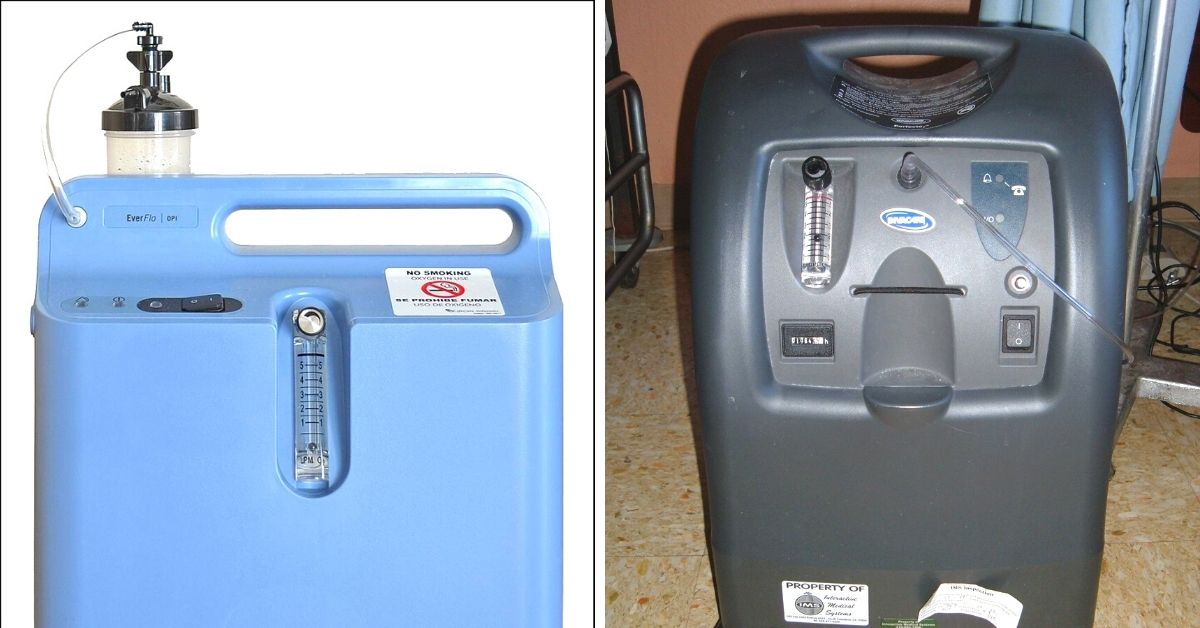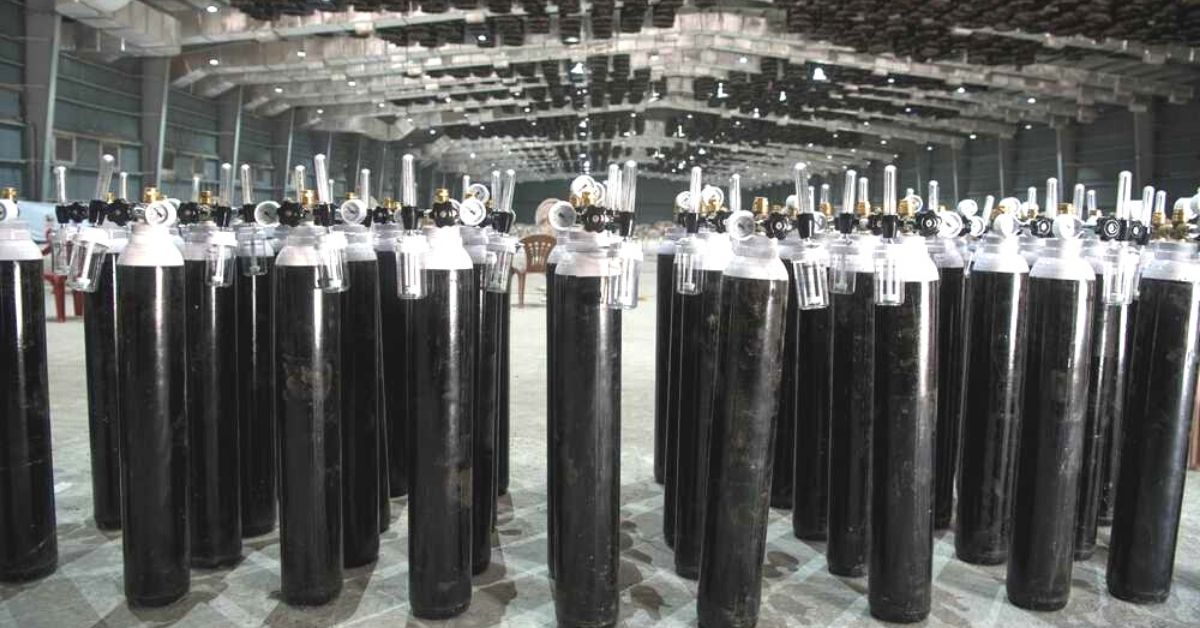On April 19, Nagpur-based Simran Nashine logged into her Twitter account to seek help for 41-year-old Girish Kesai, a COVID-19 patient. His oxygen saturation levels had dropped to 82%.
It had been well over 24 hours since his health had started deteriorating, and the wait for a hospital bed with an oxygen facility was only increasing. Fortunately, within the next few hours, Girish was able to receive admission. In those critical hours between his oxygen levels dropping and him finally being admitted to the hospital, his life depended on an oxygen concentrator.
This machine filters oxygen from the atmosphere and helps patients access it through a mask or cannula.
“The machine helped maintain his oxygen levels and prevent his health from deteriorating faster. It bought us time to scramble for an oxygen bed for further treatment. Without the concentrator, it would have been difficult to sustain for long,” Simran tells The Better India.
Like Girish, millions of COVID-19 patients across India are struggling to breathe during the initial stages of infection. Hospitals and the medical infrastructure are overwhelmed, resulting in a lack of oxygen beds and ventilators. If the administration of oxygen is delayed, a patient’s health can deteriorate so fast that the results can be fatal.
Buying time in crucial hours

Aarti Nimkar, former president of the Indian Medical Association (IMA), Pune, says an oxygen concentrator can be a life-saver during cases in which a patient needs mild oxygen.
“Ideally, oxygen levels in the body should be above 95. However, in COVID-19, the disease causes lung fibrosis and affects breathing among patients. A feeling of breathlessness, shortage of breath, chest pain and other respiratory issues are common symptoms. In such cases, the patients need oxygen therapy at the soonest, as the levels may start dropping. Such patients need assistance to compensate for inadequate breathing capabilities,” she says, adding, “The device can help boost oxygen levels if they drop to 80-85.”
She adds that the devices are available in 5-10 litres per minute flow capacities, cost between Rs 25,000 and Rs 60,000, and should be used under the supervision of doctors. “The machine can buy crucial time for patients. They may rely on the device before the ambulance arrives and they are hospitalised,” Aarti adds.
Aarti says the device can help boost a patient’s oxygen levels from 85 to up to 90 or 95, and even maintain these parameters to some extent. “Increased levels reduce the struggle for the patient and risks of health complications caused due to shortage of oxygen,” she adds.
Gujarat-based Ami Joshi, director of Ashmi Healthcare Private Limited says that over a hundred patients have benefited from oxygen concentrators since the surge in cases during the second wave.
“The device is simple to use, as it does not have a manual regulator like oxygen tanks. It prevents excess discharge and can be handled by the patient as needed. The maintenance cost is low as it does not require refills. Only the water dehumidifier needs replacement as per the use. In some cases, two devices of 5 litres/per minute flow can be used for a single patient if required,” she says.

“The oxygen concentrator has also helped patients showing oxygen levels as low as 70,” Ami says, adding that each machine is available on rent at Rs 400 or sometimes lent for free to people who cannot afford it.
Explaining the functioning of the device Pune-based Sundeep Salvi, director of Chest Research Foundation (CRF), says, “The atmospheric air consists of about 21% oxygen, 78% nitrogen, and then other gases. The oxygen concentrator works by absorbing air from the surroundings and filtering out nitrogen and other gases. The oxygen is stored in a cylinder to be inhaled by the user.”
How it works
The machine operates on electricity and requires uninterrupted power supply with power-back ups.
The machine starts releasing oxygen at the push of a button.
The device filters nitrogen and increases the concentration of oxygen for inhalation.
It is recommended to use the concentrator only if the SPO2 (oxygen saturation) level drops below 95.
It is mandatory to have a doctor’s approval to use the device.
Use an oxygen mask or nasal cannula as recommended by the medical expert for inhalation.
Ensure the filters are cleaned and do not block the air entry. It may affect the performance of the device.
Patients with asthma, COPD and respiratory ailments can also use it if prescribed by the doctors.
‘Best during the recovery stage’
Sundeep cautions that an oxygen concentrator cannot be a replacement for oxygen or a ventilator. “It can only act as a cushion before the severity of the disease increases. Patients with moderate and severe health conditions will need higher doses of oxygen, and the device cannot meet those heavy requirements,” he explains.
“On many occasions, the severity increases dramatically. The oxygen levels in the patient drop suddenly. In such cases, the patient should be moved immediately to oxygen or ventilator beds. The oxygen concentrator will prove futile,” he adds.

Sundeep believes that oxygen concentrators can be more beneficial post-treatment. “The device can work as a support system during the recovery stage of the COVID-19, as here, smaller doses of oxygen are required. This way, bed occupancy at the hospital reduces, and the patient can continue the treatment at home. The vacated bed becomes available for another patient who is in more urgent need of oxygen or a ventilator,” he adds.
Sudha Khisti from Nagpur is one such COVID-19 patient recovering from the disease. “I was diagnosed on March 25 and remained hospitalised for almost 20 days. As I suffer from asthma, the doctor was concerned about my health and suggested I buy an oxygen concentrator,” she says.
The 68-year-old adds that moving out of the hospital reduced the chances of getting reinfected and her family members contracting COVID-19. “The device has proven to be a game-changer. After using it for a week, my oxygen levels have increased, and my dependency on the device has reduced. Earlier, I used it for almost five hours a day. But now, I use it only for a couple of hours. It has made me confident about my health,” she says.
Aarti emphasises that oxygen concentrators do benefit patients, especially in difficult situations. “It would be appreciated if the government can waive taxes or reduce the prices of these devices. It will make it more affordable for common people and prove beneficial in times of the pandemic,” she adds.
To procure an oxygen concentrator, please click here, here and here.
Edited by Divya Sethu
No comments:
Post a Comment